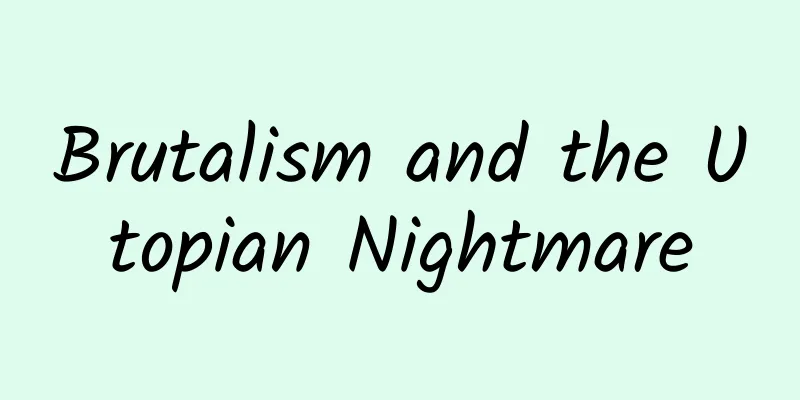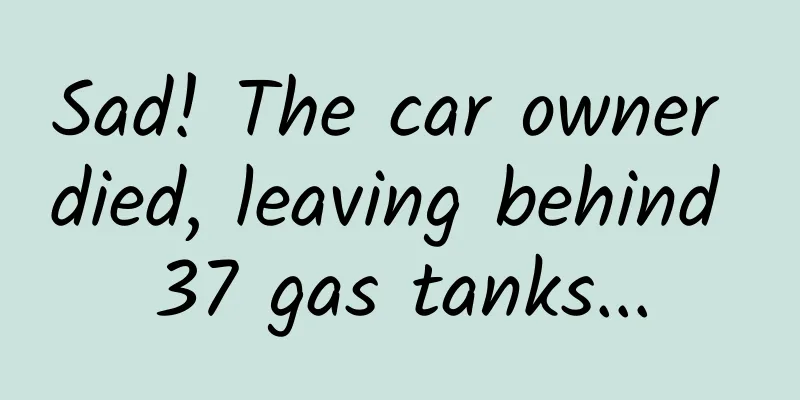Brutalism and the Utopian Nightmare

|
Leviathan Press: The designer of the Trellick Tower mentioned in this article is Ernő Goldfinger, a follower of Le Corbusier and an important participant in modernist architecture. To this day, the modernist urban planning advocated by Le Corbusier and others has received mixed reviews, with critics criticizing the "inhumanity" of his ideas. But if you carefully read his articles in the 1940s, "... the legitimate pursuit of any society that aims at long-term planning must first be: to provide a place for people to live, to protect them from the intrusion of natural forces and thieves. Most importantly, it is to spare no effort to maintain a peaceful atmosphere of home around them, so that they can harmoniously develop their existence without risking to transgress the laws of nature." It is not difficult to see that considering people as the focus of residence, Le Corbusier called the house a "machine for living", which is consistent with his view of advocating the theory of social machine. However, when providing a "housing for people", no matter how ideal the concept is, it must ultimately be implemented on the concept of "people". Le Corbusier and his followers may have to face a question: what kind of people are served by designing a "functional" living machine? What is its effect? Houses and buildings in North Kensington, London, 1975, with Trellick Tower in the background. © Graham/Evening Standard/Hulton Archive/Getty Images There was nothing romantic about postwar British housing. In London alone, 100,000 homes were destroyed by the Blitz. The urgent need to rebuild homes and shelters meant that romance was rarely a factor in the reconstruction process. Ballard, who grew up in the International Settlement in Shanghai, China and spent two years in a Japanese internment camp, returned to Britain as a teenager in 1946. He described Britain at the time as "a very run-down place". He said, "It was imprisoned in the past and exhausted by the war." After that, there were architectural and planning theorists who believed that everything could be restarted based on modern ideas and technological advances, building new towns and developing solutions to urban and suburban housing problems. The "utopian modernists" represented by Le Corbusier believed that advances in technology and engineering made possible the birth of forward-looking architecture that would provide housing for all, thereby essentially promoting socialist ideals. This thinking, combined with the need for higher-density housing, has led to the rise of so-called “tower blocks” across the UK: multi-storey apartment blocks that may include other features such as communal spaces on different levels, or shared walkways and staircases known as “streets in the sky”. The idea of cramming more people into a smaller space and providing them with all the modern conveniences is a huge appeal to housing executives, and was a clear influence on post-war British architecture. The first tower block was built in London in 1954, and by the end of the 1950s, half a million new apartments had been completed, many of them "mixed" developments containing multi-storey apartment blocks. Swiss-born French architect Charles Edouard Jeanneret, originally known as Le Corbusier, was a proponent of utopian modernist architecture. © Felix Man/Getty Images In 1975, Ballard published a novel that focused on London's current development, combining the consumerist ideal of living in a luxury home with the social problems caused by the crowded urban environment. At the beginning of the novel, 2,000 hopeful residents move into a 40-story apartment building, whose sleek, modern design and high-end amenities make them feel as if they have entered a comfortable domestic life. Yet, by the end of the novel, homes, halls, shops and corridors have been destroyed by Brutalism. This has nothing to do with architectural design, but it inspires malice. Ballard made his dislike for the development clear, saying the apartments resembled "little cells" in the cliff face. The building was not intended for charity (to use Le Corbusier's words) but rather a "huge machine designed to serve the isolated individual inhabitant." The range of services within the building - air conditioning, garbage removal, electrically operated equipment - would have required "a tireless army of servants" "a century ago". The architect, who lived in the attic of the building and wore a white robe, was ironically compared to a "fallen angel". If a woman who grew up in the countryside married him, she would definitely feel uncomfortable with this automated and secluded lifestyle. The apartments in Ballard’s dystopian district are not like the high-rises in London and other British cities – which are home to social housing tenants – but are instead filled with “professionals” who are grouped according to their wealth. The lowest nine floors are “homes of the proletariat”, including film technicians and stewardesses, while the middle section, up to the 35th floor, is made up of “professional members” – doctors, lawyers, accountants and tax experts, and the top five floors are home to “low-profile oligarchs, corporate tycoons, TV actresses and careerist academics”. The last group of residents has access to high-speed elevators, carpeted stairs and “excellent services”. Unsurprisingly, the residents’ discontent in this “sky paradise” or “glorified apartment” is on the rise. The Trellick Tower was completed in 1972. It is 98 meters high, has 31 floors and houses 217 households. It is a collective housing. The apartment was once in poor security, but now it has been restored because many artists gather here. The picture shows the Trellick Tower in 2011. © Stefano Ravera/Alamy Robert Laing, a lecturer in physiology, is one of the main characters in the story. His first unpleasant experience is caused by the garbage chute shared by the residents. While observing the social hierarchy of the building, he quickly realizes that "the residents on the upper floors often don't care about the residents on the lower floors." A failure in the building's power supply and the breakdown of some of the elevators on the lower floors trigger an internal class war. Unpleasant conflicts in public places quickly escalate into physical attacks. Laing is attracted by the growing smell of corruption, and like most of the residents, they raid each other's apartments, obsessed with "security, food and sex." Ballard describes this conflict as surrealist in its extreme, arguing that the architecture itself is bound to cause such behavior, "designed, on an unconscious level, for war." The emotionless narrative records scene after scene of residents struggling in nearly dismantled, barricaded apartments, garbage everywhere, and pets being killed and eaten. Ballard was not fond of Britain’s “green and pleasant land” and its promise of rapid modernisation after the war, but he saw worrying signs in the skyscrapers that were rising in Britain and the United States. In London, some buildings that have made much of the promise of the future have been found to have problems, with crime and vandalism occurring frequently, and sometimes even failing to function properly. The concept of "streets in the sky" that offer amenities at different levels and shift living space vertically has shown worrying cracks, which has attracted many critics. Ballard never directly mentions these projects in his book, but he claims to have conducted research on crime and concluded that "crime levels are affected by freedom of movement and are higher in cul-de-sacs. High-rise buildings are like cul-de-sacs in the sky with 2,000 people crammed together." Although Ballard never directly compares the Brutalist towers that were going up during the time he was writing to his novels, they can certainly be seen as better architecture for when “man is gone.” As pristine buildings, they look like graceful sculptures, but less so when their balconies are dotted with elements of everyday life and further degraded by poor maintenance, graffiti, and the indifference of their occupants. Unlike the mindless conformity of Aldous Huxley’s Brave New World, the cookie-cutter luxury Ballard depicts dehumanizes people, leading to “a regression of the middle-class professional into a state of barbarism.” Three people died when part of the Ronan Point tower block in London collapsed in 1968. © Getty Images The novel is often associated with Trellick Tower, a 31-storey brutalist building in Kensington designed by architect Ernő Goldfinger. At the time Ballard wrote Skyscraper, the building had already been plagued by problems and bad press. Even before it opened, construction work and other projects were in crisis. In 1968, a fire at London’s Ronan Point Building caused a massive collapse of 23 floors, killing three people. The disaster sparked such a public outcry against high-rise buildings that by the time Trellick Tower was completed in 1972, it was already being labelled a failure. Gofinger’s “dry-cleaning room” for the ground-floor amenities area was vandalised before it was completed, and he tried to persuade residents not to hang clothes on their balconies (which would have damaged the tower’s appearance), but no one cared. Just before Christmas 1972, a fire hydrant on the 12th floor was sabotaged, flooding the elevator shaft and meaning the entire building would be without water, electricity, and heat for the holiday season. Crime and social degradation continued to plague the building, to the point where some council housing residents no longer wanted to live there. (It’s worth noting that at least some of Gofinger’s assumptions were correct: Improvements in maintenance and security have made Triereck Tower a desirable address in the 21st century.) Rather than using social housing schemes as the basis for the fictional buildings in his novels, or any local council-run high-rise as inspiration, Ballard deliberately sets his stories in upmarket versions, referencing the luxury high-rises he has lived in, both in London and abroad. He describes the complex of offices and housing estates in his parents’ neighbourhood near Victoria, which he says is mostly populated by “rich businessmen” who “drive Rolls-Royces and live in unremarkable but expensive flats”. Yet the residents “spend all their time bickering” over “the most incredible trivia”, such as who has to pay for the potted plant display on the 17th-floor terrace and whose curtains are ugly. He finds that the tenants of the upmarket apartment blocks on Spain’s Costa Brava can also be stingy. These are mostly educated professionals, but Ballard says: “There is a rift between the bottom and the top.” Marseille apartment. © Greyscape Interestingly, Ballard placed his high-rise shops and facilities on the middle level (the 10th floor), just as Le Corbusier did in his groundbreaking utopian model, the Unité d'Habitation in Marseilles, which became another source of tension between residents in the novel. Gofinger believed that certain services within the building were disadvantageous to residents on the ground floor, so in Trellick Tower he chose to place these facilities - the nursery, surgery, laundry, etc. - on the ground floor. Another direct provocation to the book’s high-rise buildings might come from the development of London’s docklands at the time Ballard was writing. Developers sought to regenerate a long-abandoned stretch of land between old warehouses and abandoned shipyards on the waterfront by introducing a scheme of high-rise office and residential towers. The first towers in the project were completed in the 1980s, but plans to build on the abandoned port had been underway since the early 1970s. Ballard specifically sited his fictional tower within a square mile of London’s “abandoned docks and warehouses,” so the development of London’s Docklands also provides some context. Yet Ballard seems particularly keen to demonstrate that luxury high-rises can also easily lead to crime, as can the unfortunate stories of subsidized housing. Indeed, the professional class of Ballard’s imaginary world begins to grow increasingly deviant, even enjoying its own degeneration into an inhuman state as the surrounding buildings are completed and occupied. The novel’s five towers overlook an ornamental lake, but the lake is reduced to an empty concrete basin (a sign of unfulfilled promises), while the residents of the first tower descend into a barbaric state that recalls William Golding’s Lord of the Flies, where the boys’ experiences also represent the fall of humanity. Writer JG Ballard outside his home in suburban Shepperton in 1973. © David Reed Archive/Alamy Ballard’s more extreme scenarios may be in the realm of science fiction or fantasy, but we can’t easily dismiss his underlying claim that life inside vertical buildings could lead to serious social and psychological problems. His decision to focus on a luxury high-rise inhabited by highly qualified wealthy people, rather than a typical high-rise built to solve social housing problems, is perhaps intended to further illustrate that it is the design of the building that causes the hellish downward spiral of human behavior, not the class of its residents. Even more ironic is that in Ballard’s technologically advanced high-rises, conflicts among residents are mainly caused by everyday facility problems, such as elevator failures. Ballard, a father of three who lives mostly in a "small suburban house" in Shepperton, England, said reporters who came to interview him were often surprised because they "expected him to be addicted to drugs or do all kinds of perverted behavior," but in fact he was "a very easy-going man who played with his golden retriever and had a happy family." It seemed that all the madness was locked up in the high-rise. This article is excerpted from "From Pemberley to Brideshead, Great British Houses in Literature and Life" published by Unbound in May 2021, written by Phyllis Richardson. Editor's note: Brutalism is a type of architectural style that can be classified as a modernist architectural style. It was mainly popular between 1953 and 1967 and developed from Functionalism. Its architectural features are to seek a formal way out from the rough, heavy and wild feeling of untidy reinforced concrete (or other materials). Geisel Library, University of California, San Diego. © CoBo Social Church of John XXIII, Cologne. © Julia Krakau Kozia 9, Warsaw. © Stefano Nardone Bank of Georgia, Tbilisi. © Flickr Wotruba Church, Vienna. © Wikimedia Commons Velasca Tower, Milan. © Wikimedia Commons Boston City Hall. © Getty Images By Phyllis Richardson Translation/Sodium Potassium Proofreading/Rabbit's Light Footsteps, Sesame Stuffed in Teeth Original article/www.atlasobscura.com/articles/ballard-high-rise-inspiration This article is based on the Creative Commons License (BY-NC) and is published by Sodium Potassium in Leviathan The article only reflects the author's views and does not necessarily represent the position of Leviathan |
<<: Can looking at green protect your eyesight? I didn’t expect to be deceived for so many years…
>>: What is the charm of dried vegetables? Why are people in the north and south obsessed with them?
Recommend
Android bottom navigation bar implementation (IV) TabLayout+ViewPager
Here is a brief record of implementing the Androi...
Tim Draper, the most powerful investor: Capital winter is just an exaggeration
[[154628]] In today's star-studded Silicon Va...
Fish and dragons are mixed together: It looks like a fish but it’s not a fish, and it’s called a dragon but it’s not a dinosaur?
Ichthyosaurs are a type of marine reptiles that a...
A collection of advertising creation tips that took 8 years to compile
I also summarized 12 of my own advertising creati...
Screen resolution goes back to the last century! US military Windows 10 tablet exposed
The US government has recently announced that it h...
What? The "yogurt" you drink may not be real yogurt...
A while ago, a popular yogurt brand was discussed...
After being hypnotized, can people only obey? Don't be fooled by movies and TV shows
Image source: Pixel Addict - CC BY 2.0 A mysterio...
4 private domain community marketing formulas!
In recent years, the concept of private domain co...
Be careful! You must know these 6 ways of spreading infectious diseases~
Review of this article: Zhang Jieli, Deputy Chief...
This article will show you the magical ocean temperature difference power generation
The ocean is the world's largest solar collec...
Love of mathematics: the extraordinary genius Galois and his beautiful theory
The mathematical genius Galois died in a duel at ...
A Preliminary Study on Android Kotlin Coroutines
1. What is it (coroutines and Kotlin coroutines) ...
Ski jumping: Why don’t you get hurt when you land after flying off a 100-meter-high cliff?
Have you ever watched ski jumping? The athletes s...
Apple follows Android's lead and uses OLED screen iPhone 8 is expected to be more than a concept phone
This year marks the 10th anniversary of Apple ent...









